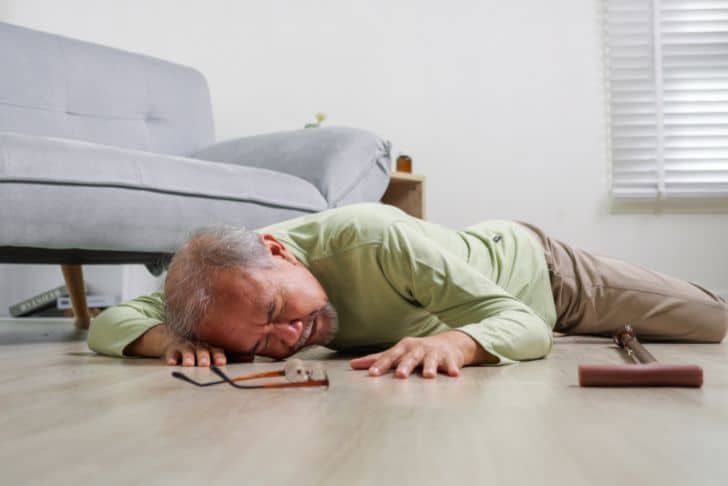Unfortunate incidents like falls pose a serious health threat to older adults, sometimes even robbing them of their independence. Nevertheless, it’s important to remember that aging doesn’t necessarily predicate an inevitable decline into frequent falls. You have the ability to bolster your defenses or aid a loved one in fall prevention. The Injury Center at the Centers for Disease Control and Prevention has crafted proven strategies that challenge the notion that falls are simply another part of getting older. Harnessing vital data and research, the CDC is actively aiding adults 65 years and older in fighting against falls, which, in 2020 alone, resulted in over 36,000 deaths and 3 million emergency department visits among this age group.
Understanding the Risk of Falls in Older Adults
Understanding the risk of falls in older adults is crucial for preventing injuries, improving safety, and ensuring peace of mind for both older adults and their caregivers. In the context of fall prevention, older adults are generally defined as individuals aged 65 and older. These individuals may experience changes in their physical health due to aging, which often makes them more susceptible to falls and injuries.
Falls are a significant health concern and lead to injuries, particularly in older adults. They can negatively impact an individual’s independence and quality of life. In fact, falls are a leading cause of injury among older adults.
The incidence of falls, injuries, and deaths resulting from falls among older adults is increasing. This increase emphasizes the need for effective fall prevention strategies and interventions to mitigate this growing public health concern.
Economic Impact of Older Adult Falls
The economic impact of falls among older adults is substantial. In addition to the physical harm and emotional distress they cause, falls lead to considerable healthcare expenses. The annual healthcare cost for older adult falls is estimated at $50 billion.
The majority of the financial burden of treating fall-related injuries in older adults falls on the healthcare system. Approximately 75% of the costs are paid by Medicare and Medicaid, placing a significant drain on these resources.

The Role Centers for Disease Control and Prevention (CDC) Plays in Fall Prevention
The CDC plays a vital role in preventing falls among older adults. It leverages data and research to develop, implement, and promote evidence-based strategies for fall prevention. The objective of the CDC in this area is not just to save lives, but also to help older adults maintain their independence.
Further, the CDC also contributes to the prevention of elder abuse, which can sometimes be a factor in falls. Through their efforts, they aim to create safer living environments for older adults.
Interventions to Reduce and Prevent Falls
There are a variety of broad strategies available to prevent falls in older adults. Proper medications, regular eye check-ups, strength and balance exercises, and making homes safer are all part of an effective fall prevention program.
Family members also play a vital role in fall prevention. By educating themselves about the risks and preventive measures, they can help their loved ones avoid falls.
Another effective measure is the use of tools and plans such as the MyMobility Plan. Such tools can help older adults stay active,which in turn, can help prevent falls.

Medicine Risk and Its Relation to Falls
Certain medications can increase the risk of falls among older adults. This is due to side effects like drowsiness, dizziness, and low blood pressure.
Raising awareness about this risk among both healthcare providers and older adults can lead to better medication management, preventing medication-related falls. It is essential for medical professionals to regularly review the medications of older adults to minimize possible risks.
Transportation Safety for Older Adults
Older adults often face challenges and risks while driving, which can increase the likelihood of falls. Conditions such as poor vision, limited mobility, and slower reaction times can make driving more challenging for this age group.
To improve transportation safety, older adults can take advantage of driver safety programs that provide assessment and training. Additionally, ensuring that vehicles are well-maintained can enhance driver safety.
The link between transportation safety and fall risk is significant, as accidents or near-misses can lead to falls, either in or out of the vehicle.

Concussions and Traumatic Brain Injury (TBI) in Older Adults
Falls can result in concussions and traumatic brain injuries (TBI), which are serious conditions that can have long-term impacts on an older adult’s health. Understanding the incidence and the potential impact of TBI following a fall can help in formulating prevention strategies.
There are a variety of preventive strategies to reduce the risk of TBI amongst older adults. Ensuring safe home environment, regular eye check-ups and physical exercise are among the measures that can be taken.
Moreover, quick access to medical care following a fall can significantly improve the outcome and recovery from a TBI.
Fall Prevention Resources and Publications
Various resources and publications are available to help prevent falls among older adults. These include articles, brochures, manuals, fact sheets, toolkits, and training material focusing on fall prevention.
Several important publications study fall patterns in older adults and analyze data to provide insights into fall prevention. It is crucial to stay updated with the latest findings and recommendations for effective fall prevention strategies.
Analysis of Fall Locations Resulting in Emergency Visits
Understanding where falls commonly occur can help in taking appropriate preventive measures. Falls often happen at home in areas like the bathroom, stairs or kitchen due to lack of grab bars, improper lighting or clutter.
Ensuring a safer home environment is essential to minimize fall risk. This can be achieved through modifications like adding grab bars, improving lighting, removing tripping hazards, and maintaining clear walkways.
Accessibility and safe mobility both indoors and outdoors are also vital factors in preventing falls.
Alcohol-Related Falls Among Older Adults
Alcohol increases the risk of falls among older adults. It can cause loss of coordination, slow reflexes, and impair balance, all of which can lead to falls.
It’s vital for older adults and their caregivers to understand how alcohol can increase fall risk. Health professionals can provide education and interventions to help older adults limit or avoid alcohol consumption, as a preventive measure to reduce falls.
